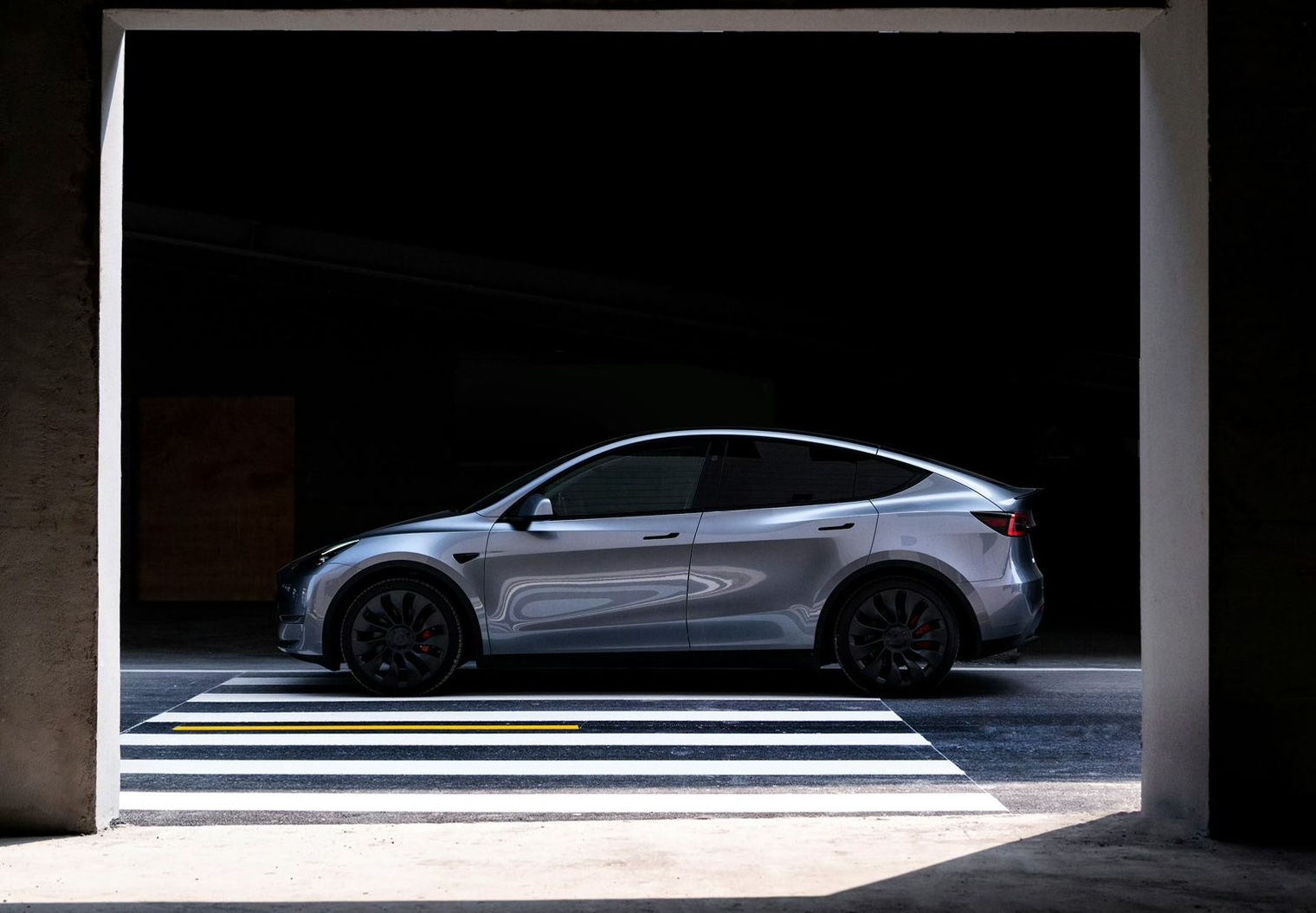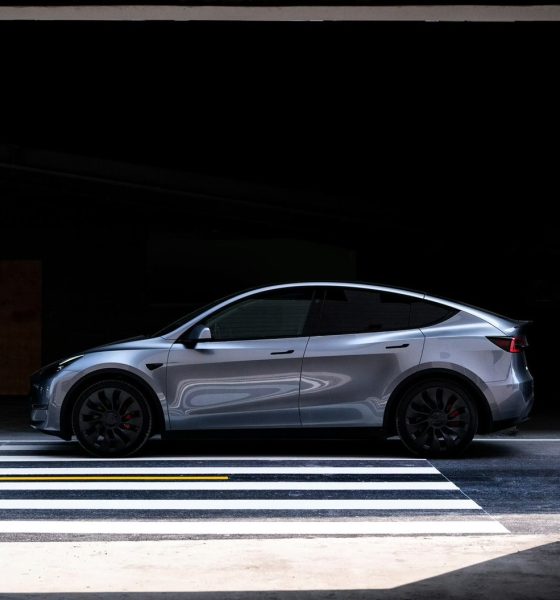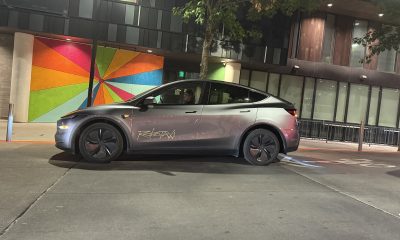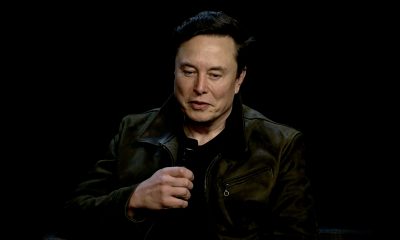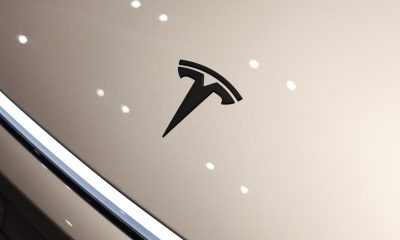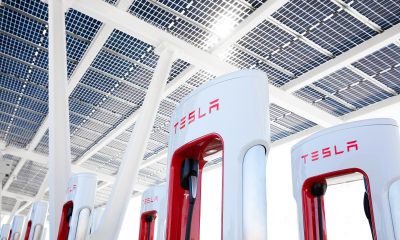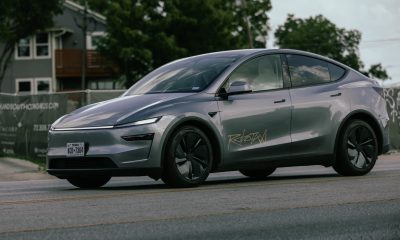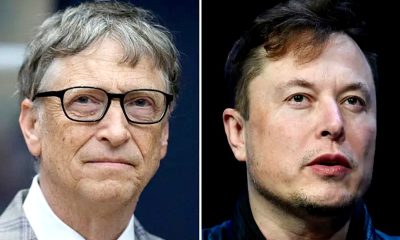Tesla China has extended its five-year, zero-interest loan offer once more—this time to August 31, 2024. The incentive was announced on Tesla China’s official order pages for the Giga Shanghai-made Model 3 sedan and Model Y crossover.
As could be seen in Tesla China’s order pages for the two Giga Shanghai-made vehicles, the five-year, zero-interest loan offer is available for the base Rear Wheel Drive (RWD) and mid-tier Long Range Dual Motor All Wheel Drive (AWD) variants of the reengineered Model 3 and Model Y. The top-tier Model 3 Performance and Model Y Performance are not included in the incentive.
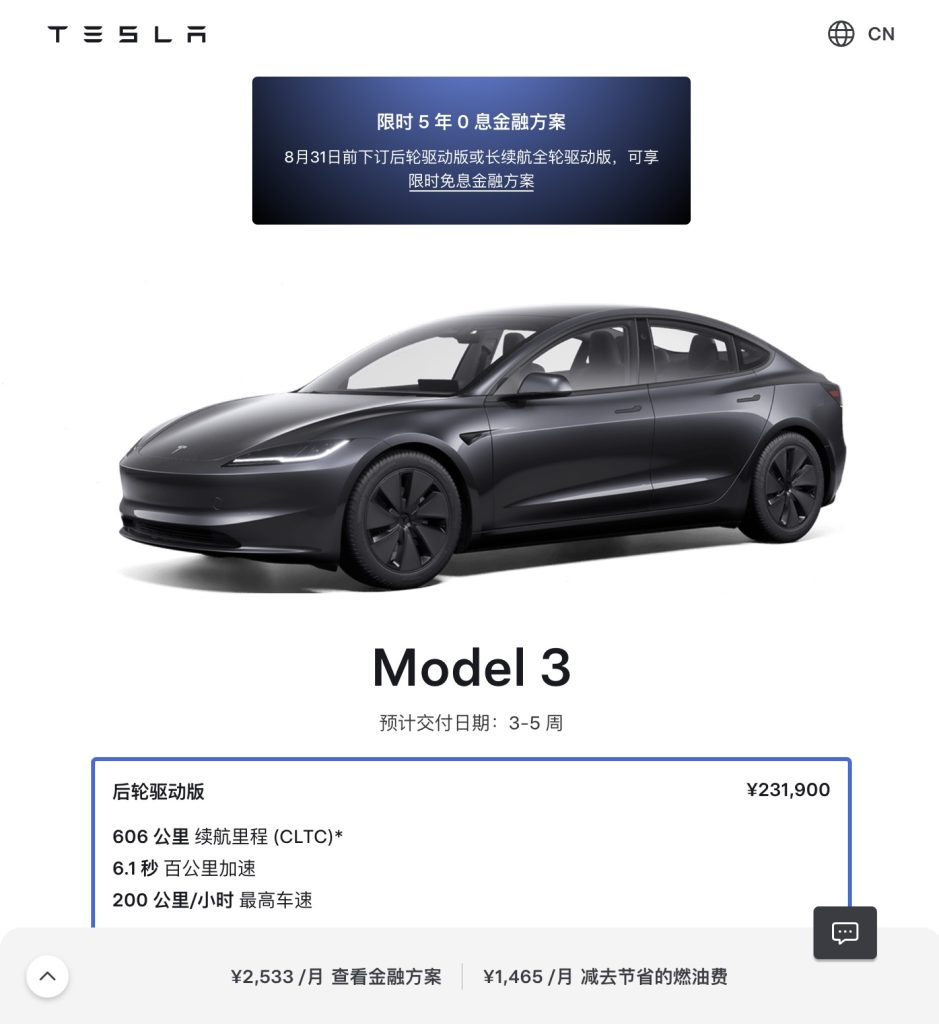
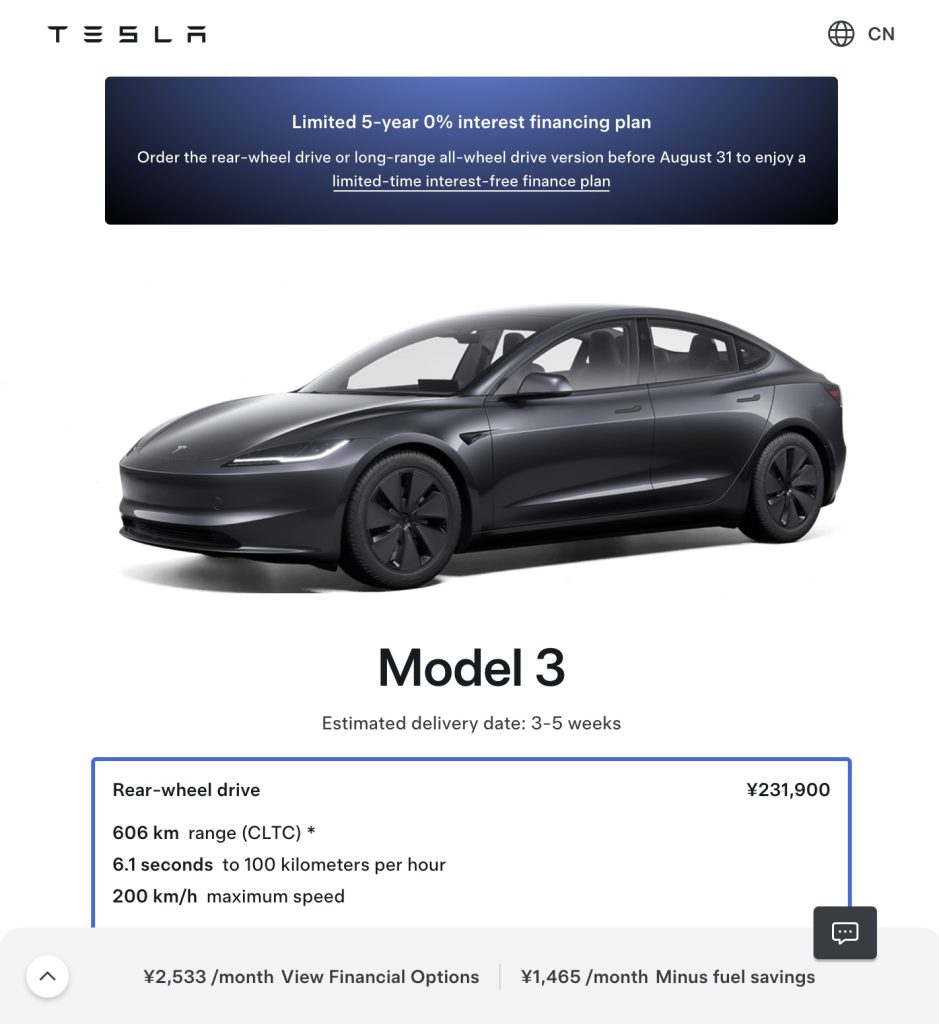
Tesla customers in China who wish to take advantage of the company’s five-year, zero-interest loan are advised to pay a downpayment of RMB 79,900 ($10,984) for a reengineered Model 3 RWD, which is listed with a starting price of RMB 231,900 ($31,880). With the program in place, the monthly payments for the base all-electric sedan are dropped to just RMB 2,533 ($348).
Those who wish to purchase a Model Y RWD with Tesla China’s five-year, zero-interest loan offer are advised to pay a downpayment of RMB 79,900 ($10,984). With the incentive in place, the Model Y RWD, which has a starting price of RMB 249,900 ($34,354), would have a monthly payment of just RMB 2,833 ($389).
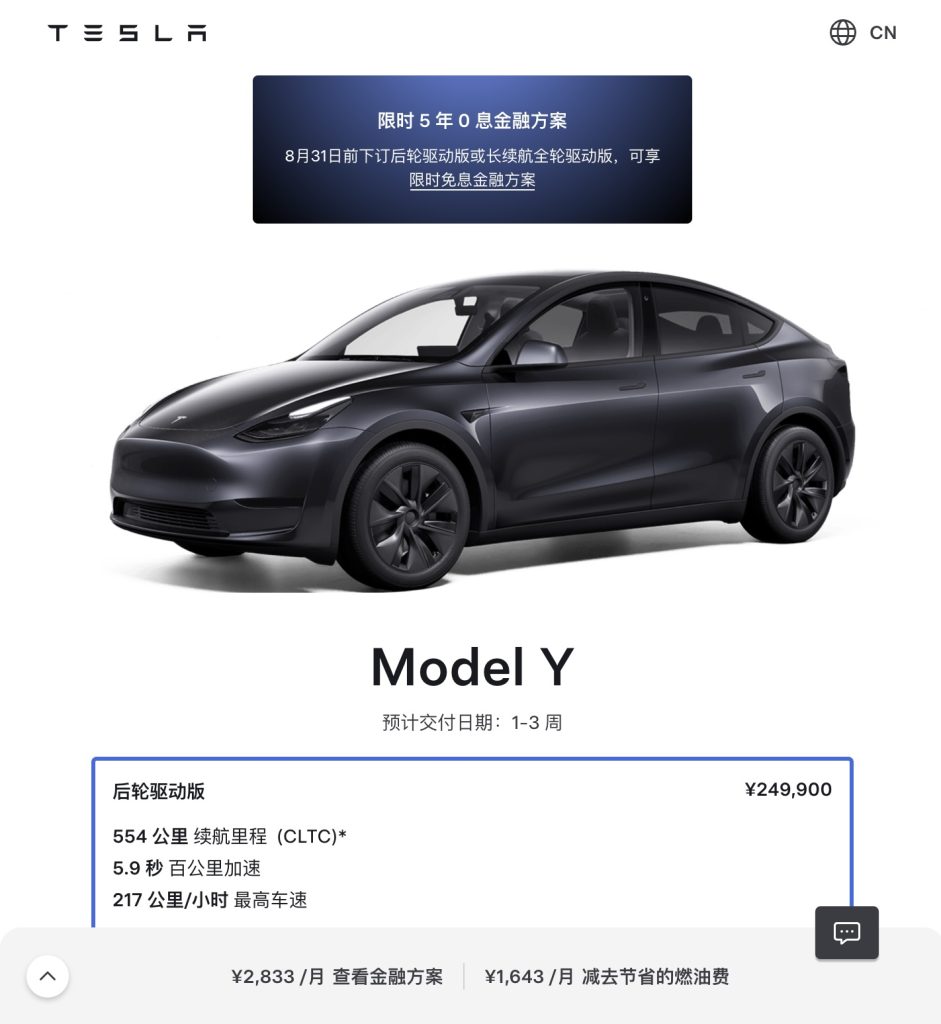
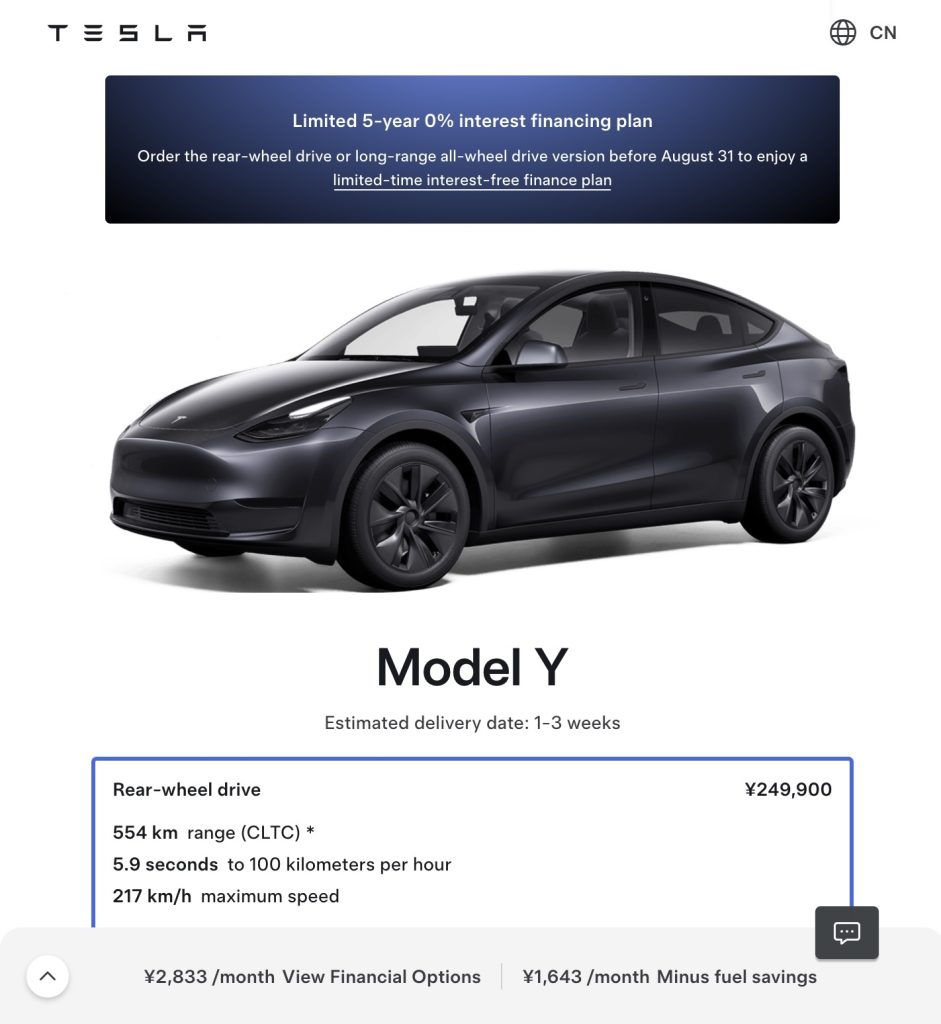
Tesla China started offering a zero-interest loan offer for domestic customers in April 2024, though at the time, the electric vehicle maker noted that the incentive would only run until the end of Q2 2024. The company extended the incentive at the start of the third quarter, with Tesla China stating that the zero-interest loan offer would be extended until July 31, 2024.
Considering the recent updates on Tesla China’s order pages for the Model 3 and Model Y, the zero-interest loan offer is being extended one more. The only difference this time around, as noted in a CNEV Post report, is that the Model 3 Performance and Model Y Performance are no longer covered by the incentive. With an annualized interest rate of 2.5% for the Tesla Model 3 Performance and Model Y Performance, however, both vehicles are still quite reasonable for the tech, safety, and power that they offer.
Don’t hesitate to contact us with news tips. Just send a message to simon@teslarati.com to give us a heads up.

Investor's Corner
Tesla wins $508 price target from Stifel as Robotaxi rollout gains speed
The firm cited meaningful progress in Tesla’s robotaxi roadmap, ongoing Full Self-Driving enhancements, and the company’s long-term growth initiatives.
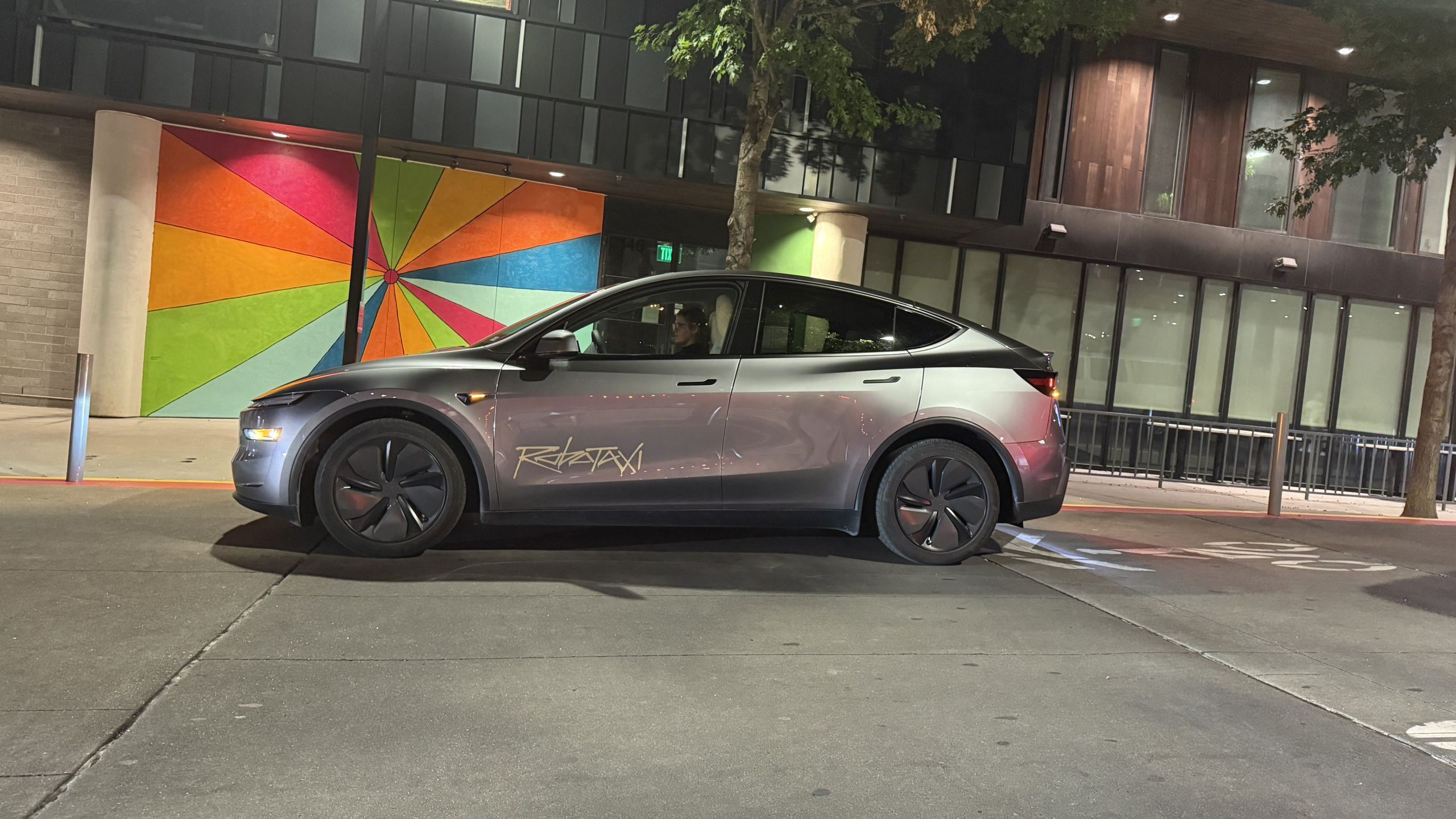
Tesla received another round of bullish analyst updates this week, led by Stifel, raising its price target to $508 from $483 while reaffirming a “Buy” rating. The firm cited meaningful progress in Tesla’s robotaxi roadmap, ongoing Full Self-Driving enhancements, and the company’s long-term growth initiatives.
Robotaxi rollout, FSD updates, and new affordable cars
Stifel expects Tesla’s robotaxi fleet to expand into 8–10 major metropolitan areas by the end of 2025, including Austin, where early deployments without safety drivers are targeted before year-end. Additional markets under evaluation include Nevada, Florida, and Arizona, as noted in an Investing.com report. The firm also highlighted strong early performance for FSD Version 14, with upcoming releases adding new “reasoning capabilities” designed to improve complex decision-making using full 360-degree vision.
Tesla has also taken steps to offset the loss of U.S. EV tax credits by launching the Model Y Standard and Model 3 Standard at $39,990 and $36,990, Stifel noted. Both vehicles deliver more than 300 miles of range and are positioned to sustain demand despite shifting incentives. Stifel raised its EBITDA forecasts to $14.9 billion for 2025 and $19.5 billion for 2026, assigning partial valuation weightings to Tesla’s FSD, robotaxi, and Optimus initiatives.
TD Cowen also places an optimistic price target
TD Cowen reiterated its Buy rating with a $509 price target after a research tour of Giga Texas, citing production scale and operational execution as key strengths. The firm posted its optimistic price target following a recent Mobility Bus tour in Austin. The tour included a visit to Giga Texas, which offered fresh insights into the company’s operations and prospects.
Additional analyst movements include Truist Securities maintaining its Hold rating following shareholder approval of Elon Musk’s compensation plan, viewing the vote as reducing leadership uncertainty.
@teslarati Tesla Full Self-Driving yields for pedestrians while human drivers do not…the future is here! #tesla #teslafsd #fullselfdriving ♬ 2 Little 2 Late – Levi & Mario
Elon Musk
Tesla CEO Elon Musk teases autobiography following fallout with Isaacson
“I need to tell my story myself and highlight lessons that I learned along the way that would be useful to others.”
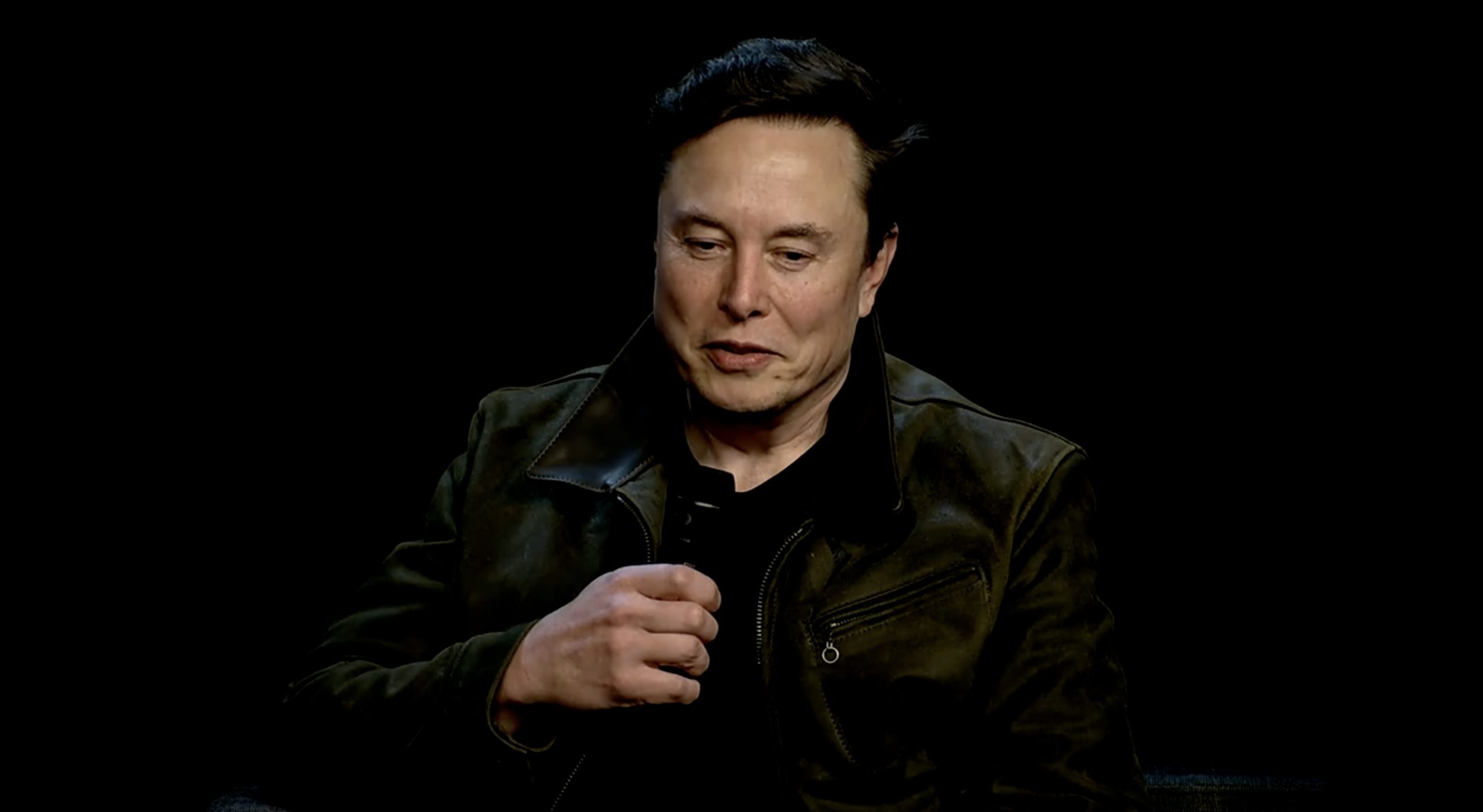
Tesla CEO Elon Musk teased the potential for an autobiography following his fallout with author Walter Isaacson, who wrote a book on the serial entrepreneur in the past.
Isaacson met with C-SPAN’s American’s Book Club on November 13, and went into detail as to why he disagreed with Musk’s place in politics, especially with how he handled Department of Government Efficiency (DOGE):
“It’s a shame because had he gone into government and focused on what he’s good at…He could have changed the government for good, but instead…he started, you know, let’s get rid of this part of USAID and firing people.”
It’s sort of a shame to see Isaacson cast stones in the direction of Musk, whom he spent a significant amount of time with, aiming to put forth an accurate and realistic depiction of perhaps the greatest entrepreneur in the modern era.
However, Musk did not come back at Isaacson. Instead, he highlighted the need for what could potentially be his autobiography, aiming to “highlight lessons that [he] learned along the way that would be useful to others.”
I need to tell my story myself and highlight lessons that I learned along the way that would be useful to others
— Elon Musk (@elonmusk) November 17, 2025
Musk’s time in government was met with harsh criticisms from many, but there was a lot of support for the work that he did during his time with DOGE as well. Eventually, Musk’s responsibilities with DOGE started to wind down, and he pledged to step back from government to focus on his companies.
A Musk-written biography would potentially be a great book for those who are interested in his story, but also those who plan to enter entrepreneurism, tech, or the sciences, as there truly could be some excellent lessons within.
However, Musk’s recently approved compensation package and the tranches that could pay him $1 trillion in shares will likely take up most of his time. Tesla also has a lofty goal of launching Robotaxi and expanding the ride-hailing service to other areas of the country in the coming months.
@teslarati With a pedestrian in the crosswalk, Tesla Full Self-Driving shows off its courtesy. Human drivers? Not so much. #tesla #teslafsd #fullselfdriving ♬ AMERICAN HEART – Maxwell Luke
Investor's Corner
Tesla receives major institutional boost with Nomura’s rising stake
The move makes Tesla Nomura’s 10th-largest holding at about 1% of its entire portfolio.
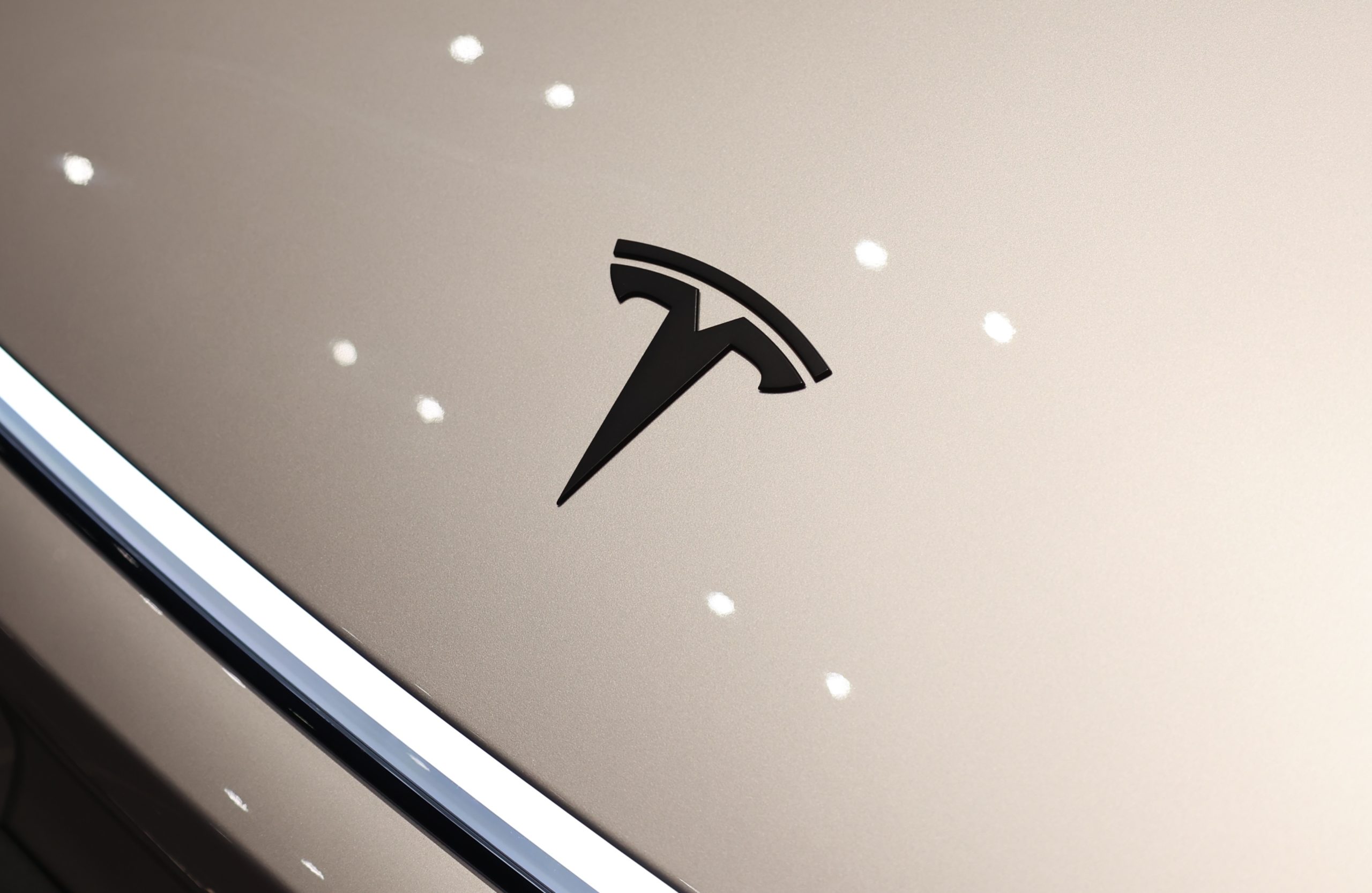
Tesla (NASDAQ:TSLA) has gained fresh institutional support, with Nomura Asset Management expanding its position in the automaker.
Nomura boosted its Tesla holdings by 4.2%, adding 47,674 shares and bringing its total position to more than 1.17 million shares valued at roughly $373.6 million. The move makes Tesla Nomura’s 10th-largest holding at about 1% of its entire portfolio.
Institutional investors and TSLA
Nomura’s filing was released alongside several other fund updates. Brighton Jones LLC boosted its holdings by 11.8%, as noted in a MarketBeat report, and Revolve Wealth Partners lifted its TSLA position by 21.2%. Bison Wealth increased its Tesla stake by 52.2%, AMG National Trust Bank increased its position in shares of Tesla by 11.8%, and FAS Wealth Partners increased its TSLA holdings by 22.1%. About 66% of all outstanding Tesla shares are now owned by institutional investors.
The buying comes shortly after Tesla reported better-than-expected quarterly earnings, posting $0.50 per share compared with the $0.48 consensus. Revenue reached $28.10 billion, topping Wall Street’s $24.98 billion estimate. Despite the earnings beat, Tesla continues to trade at a steep premium relative to peers, with a market cap hovering around $1.34 trillion and a price-to-earnings ratio near 270.
Recent insider sales
Some Tesla insiders have sold stock as of late. CFO Vaibhav Taneja sold 2,606 shares in early September for just over $918,000, reducing his personal stake by about 21%. Director James R. Murdoch executed a far larger sale, offloading 120,000 shares for roughly $42 million and trimming his holdings by nearly 15%. Over the past three months, Tesla insiders have collectively sold 202,606 shares valued at approximately $75.6 million, as per SEC disclosures.
Tesla is currently entering its next phase of growth, and if it is successful, it could very well become the world’s most valuable company as a result. The company has several high-profile projects expected to be rolled out in the coming years, including Optimus, the humanoid robot, and the Cybercab, an autonomous two-seater with the potential to change the face of roads across the globe.
@teslarati Tesla Full Self-Driving yields for pedestrians while human drivers do not…the future is here! #tesla #teslafsd #fullselfdriving ♬ 2 Little 2 Late – Levi & Mario
-
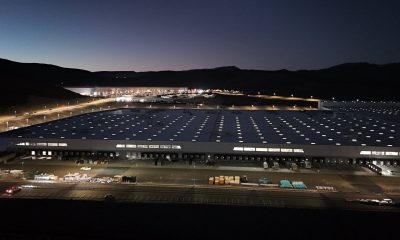
 News1 week ago
News1 week agoTesla shares rare peek at Semi factory’s interior
-
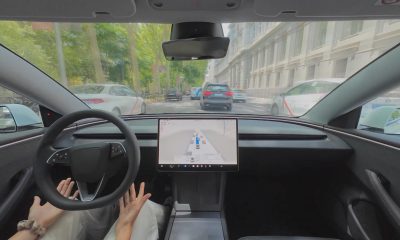
 Elon Musk1 week ago
Elon Musk1 week agoTesla says texting and driving capability is coming ‘in a month or two’
-
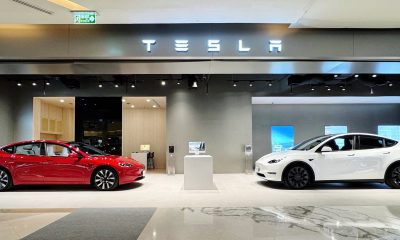
 News1 week ago
News1 week agoTesla makes online ordering even easier
-
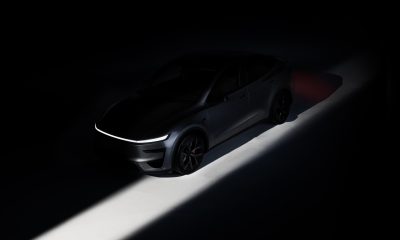
 News1 week ago
News1 week agoTesla Model Y Performance set for new market entrance in Q1
-
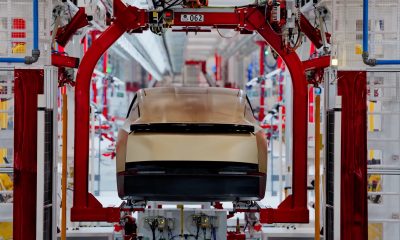
 News1 week ago
News1 week agoTesla Cybercab production starts Q2 2026, Elon Musk confirms
-
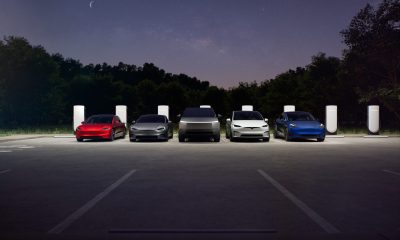
 News1 week ago
News1 week agoTesla is launching a crazy new Rental program with cheap daily rates
-
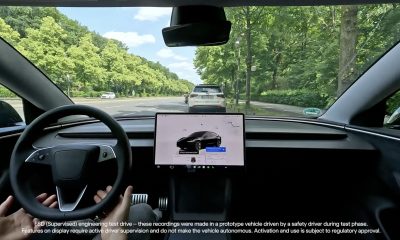
 News1 week ago
News1 week agoTesla China expecting full FSD approval in Q1 2026: Elon Musk
-
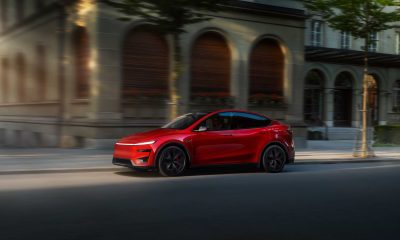
 News2 weeks ago
News2 weeks agoTesla Model Y Performance is rapidly moving toward customer deliveries
